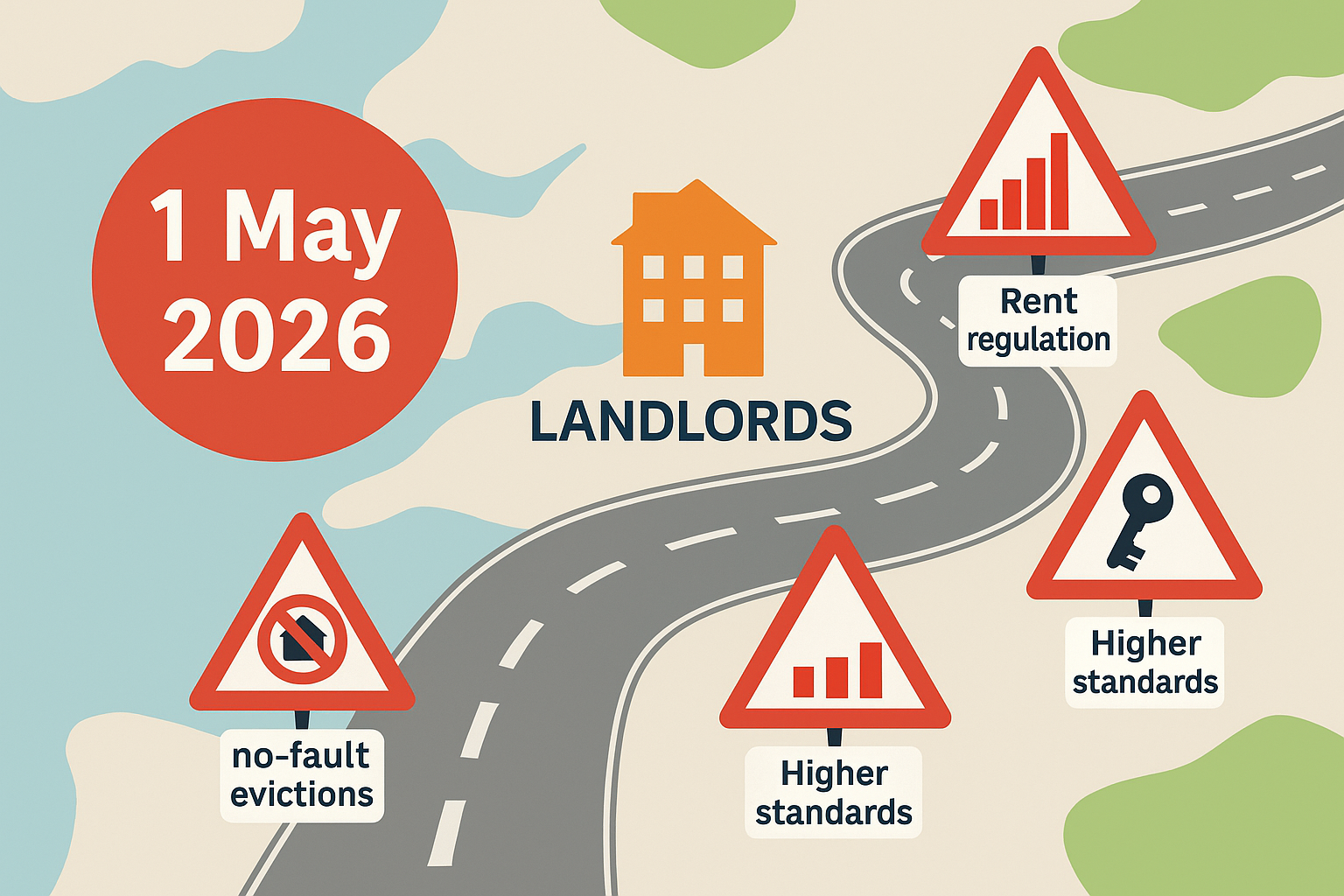The Government has confirmed a rollout timeline for the Renters’ Rights Act, with the first legal changes due from 1 May 2026. For landlords, this marks the start of one of the most significant regulatory shifts in decades – tightening compliance, limiting rent adjustments, and replacing Section 21 with a more complex legal framework.
Sector leaders say clarity is welcome – but time is short
The announcement followed The Property Ombudsman’s Consumer and Industry Forum held this week, where representatives from the Ministry of Housing, Communities and Local Government (MHCLG), Citizens Advice, Propertymark, Rent Smart Wales and the National Residential Landlords Association (NRLA) debated the implications for the private rental sector.
Chief Ombudsman Lesley Horton called the roadmap an overdue step:
“We’re really pleased to see that the roadmap has been published, giving much needed clarity on when the key provisions will come into effect.”
She added that time to prepare was “critical” and confirmed further guidance for agents and landlords will follow.
Under the Act, landlords will face new restrictions including annual rent review limits, a national landlord register, and mandatory higher property standards. Failure to comply will come with steep penalties – starting at £7,000 and rising to £40,000 for serious breaches.
A recent survey by Chester-based agent Cavendish found that 93% of landlords are not fully prepared, with just 7% saying they understand the legislation well enough to comply today.
Managing Director David Adams warned that complacency could be costly:
“The six-month window will go by in a flash, so our advice is that landlords must act quickly if they want to protect and grow their rental portfolios.”
UK rent regulation changes: Section 21 abolition confirmed
From 1 May 2026, fixed-term tenancies will convert to rolling periodic agreements, effectively ending the ability for landlords to remove unsuitable tenants quickly through Section 21.
London property litigation specialist David Smith of Spector Constant & Williams cautioned that guidance on tenancy paperwork will only be released in early 2026 – leaving a tight turnaround for compliance and training. He warned the transition will place “immense pressure” on letting agents.
- Other changes arriving in the first phase include:
- Ban on “bidding wars” between prospective tenants
- Rent increases limited to once per year
- Ban on deposits exceeding one month’s rent
Additional reforms will be phased in later, as confirmed by MHCLG.
For many landlords – particularly those managing HMOs or vulnerable tenants – the loss of Section 21 raises safety and operational concerns. Section 8, the alternative legal route, can currently take six months or more to process, leaving landlords and existing tenants exposed to disruptive behaviour during proceedings.
One experienced HMO operator argued published data shows 59% of sharers would leave due to a bad housemate, meaning tenancy cohesion is not a trivial matter – it underpins stability. The concern is that the Act focuses on rights without fully supporting landlords with workable enforcement mechanisms.
UK landlord outlook: stronger compliance or shrinking supply?
Across online landlord forums, letting agents report mixed responses: experienced landlords appear split between exiting now or pivoting portfolios toward HMOs, while newer investors – particularly millennial landlords – see opportunity in tighter regulation reducing competition.
Some analysts predict:
- Short-term rise in evictions before the May deadline, as landlords act pre-emptively
- Near-term increase in rental supply, potentially easing price pressure temporarily
- Longer-term rental inflation, particularly in HMOs, where operational costs will rise and demand may shift
Student housing providers may also face turbulence. Under the new rules, if one tenant leaves a shared tenancy, the entire agreement ends – creating instability and forcing landlords to fill mid-year vacancies with whoever is available, rather than tenant-recommended replacements.
For many, the practical and commercial implications still feel unresolved.
Editor’s view
There’s no question the Renters’ Rights Act marks a turning point. Some reforms – such as consistency on property standards and clarity around compliance – may ultimately professionalise the sector. But the removal of Section 21 before improving Section 8 risks leaving landlords exposed, especially those housing sharers, students or vulnerable tenants.
Landlords who prepare early are likely to weather the policy shift best. Those who delay may find compliance costly – not just in fines, but in lost control over their assets.
The coming months will test whether the Government can balance tenant protections with the realities of running a rental business – or whether the market will once again bear the unintended consequences.
Author: Editorial team – UK landlord & buy-to-let news, policy, and finance.
Published: 14 November 2025
Sources: ONS; MHCLG; The Property Ombudsman; Cavendish; Spector Constant & Williams; NRLA; Propertymark; Citizens Advice
Related reading: What the Renters’ Rights Act guide means for landlords








